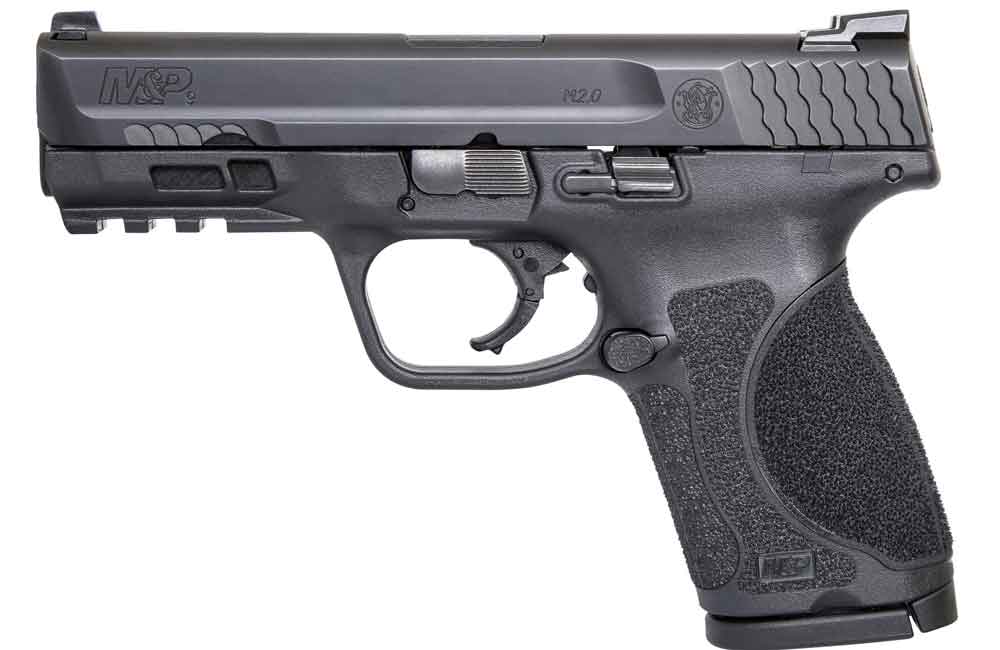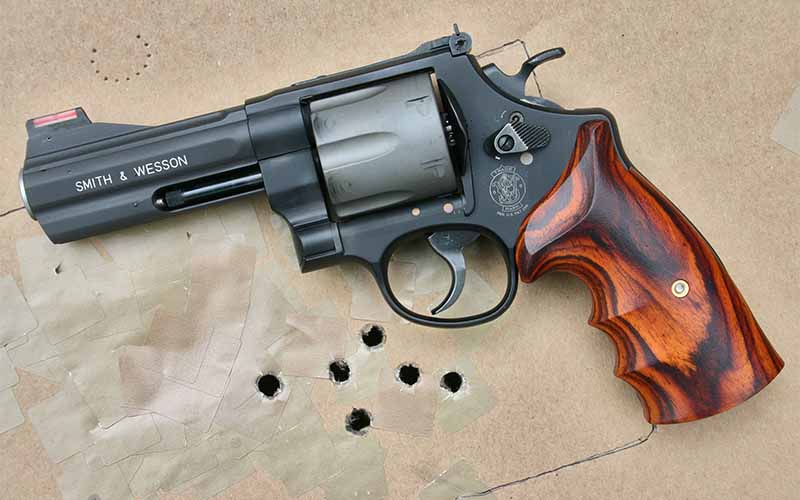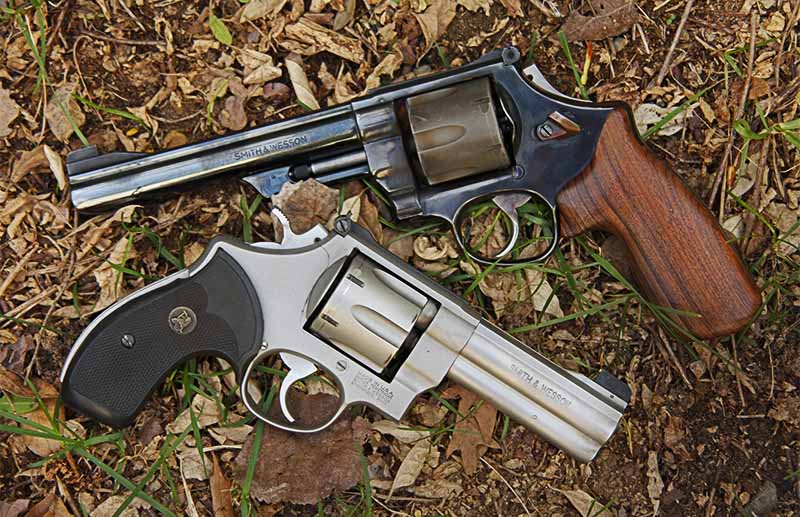The pros and cons of ultra-subcompact, subcompact, compact and full-sized handguns for concealed carry.
I grew up immersed in the car culture. Brands, models and trim packages were all background information to me, as well as the relative sizes of the models. When I got old enough to drive, that information was important, because it gave me a clue as to what I could fit into. At 6 feet 4 inches, some were simply impossible. (A friend once offered to give me a lift. I took one look at the Karmann Ghia he drove and said, “Got something in a 42 long?” He didn’t get the joke until I tried to get in.)
Well, handguns come the same way, if in a different direction. There might be something too big to carry concealed. Let’s take a stroll through the racks and see what sizes we can cover, and give you a quick idea of their pros and cons.
Ultra-Subcompact Handguns
Here reside the ultra-small guns. In the old days, that meant .22s and .25s, but today no one would risk the man-card deductions, and we see only .32s (rarely) and .380s (more common).
The examples here are the Beretta Pico and the KelTec P32 or P380. The Pico is a .380 and holds 6+1 rounds, and the KelTec is (obviously) a .32, and holds 7+1. Both are flat, light, easy to pack and meant for deep concealment. While some might use it as a main gun (often only because anything bigger would be noticed, and they work and live someplace where they absolutely cannot be found out), both of these are usually backup guns.

I view the ultra-subcompact pistols as tertiary blasters, not the second one. Well, I did when I was packing daily at the gun shops. Now I’d be like most of you: It’s the backup when something bigger just won’t fit the daily routine.
The pros are obvious: ease of carry and ease of keeping concealed. The cons? They don’t hold much ammo, aren’t hard-hitters … and they’re tough to shoot, with small grips, tiny sights and short sight radii.
Subcompact Handguns
The difference between the ultra-subcompact and the subcompact is caliber. Subcompacts are all 9mm or .38 Special, not .380 or .32. A subcompact would be something like a Taurus GX4, and not only do you get something more in caliber, but you also get more in capacity. Subcompacts often now have 10- to 11-round magazines, where only a few years ago they would have single-stack 7-round magazines. An example there would be the Walther CCP, with eight shots but a single-stack magazine.

The modern one here, and one I have kept around, is the Springfield Armory Hellcat. They call it a micro-compact, but it’s the size I have always thought of as a subcompact pistol at 6 inches in overall length. The magazine holds 11 rounds, and you can, if your clothing choices permit, use a 13-round magazine in place of the 11-shot version.
The pros here are the bigger caliber, but subcompacts can be tough to shoot. The fatter grips of the double-stack mags make it easier, but if you’re using defensive 9mm ammo out of a pistol that tips the scales at 17 ounces, it’ll be work.
Compact Handguns
The compact category is perhaps the most commonly seen (or not seen, this is for concealed carry, after all) pistol because it offers the goldilocks option: enough size to be shootable, but not so big that it’s a hassle. It has enough rounds to be useful, but again, not so big that it makes life difficult. And it’s big enough—but not too big.
OK, let’s just get this right out front: The example of compact carry pistols is, and has been for a long time, the Glock G19. There, I said it. That they were the first does not mean they are the best, as you have to put up with the Glock trigger, but a lot of people seem to not have a problem with that. If you want a better trigger, then the Sig P365 is the same size with a better trigger. If you’re looking to get more value for money and put the savings into ammo, then the Taurus G3 is your choice here. For accuracy, nice trigger, price and availability, the Springfield Armory XDm in its compact size should be one of your top choices.
The sleeper here is the S&W M&P Compact. It’s the same more-or-less 7 inches overall, with a 15-round capacity like the others, a nice trigger and interchangeable backstraps that you can build to suit your hands.

Since this is a popular size, the offerings make for a crowded field. And this is a historically popular category, so there have been choices since, well, pretty much forever.
One is the Colt Lightweight Commander, an alloy-framed 1911 with the slide and barrel shortened by three-quarters of an inch. The trick here, if trick there be, is that the 1911, as is the next pistol, a single-action design, and thus must be carried “cocked and locked.” That is, with the hammer back and the safety on. Holding 7+1 in .45 ACP, and 9+1 in 9mm, it was the mainstay of carry for pistoleros in the pre-Glock days. The other is the Browning Hi-Power, a 9mm holding 13+1 rounds, which has been brought into the 21st century by Springfield Armory, among others.
The pros of the compact pistols are many. They are a lot easier to shoot than the smaller guns, and many now can be had with optical sights … or be ready for one. They hold a more than useful amount of ammunition, and their slightly longer barrels (generally 3.5 inches to the sub-compacts 3-inch bore) gains you a bit more velocity. The cons are that they start to become a bit more difficult to conceal and keep concealed.
Full-Size Handguns
Now we’re up to the G17, the XDm in its full size, the Taurus G3, the Beretta (pick one, from the original 92 to the present day) and the Sig P320. All of these offer big magazines, with 16, 17 and 18 rounds or more. If you thought you were spoiled for choice in the compact category, you have an overwhelming set of options here. Because everyone who made a 9mm pistol (or 40, back in the days when that was cool) made one that was full-sized.

Also called “duty” sized, these have barrels more than 4.5 inches long, full-sized grips, are easy to shoot well and soft in recoil. They’re also a real bear to carry concealed. Well, the concealing part isn’t so hard; you just have to use the correct holster. What makes them hard is their weight and size, which can wear on you in the course of a day. If your comfort starts to flag, you’ll move differently, start adjusting the fit and location without realizing it … and a sharp observer will notice.
You can go even bigger, and pack a Glock, a G20 or G21, or an XDm in 10mm or .45 ACP, if you want both big bores and lots of bullets.
In the classic, this is where the 1911 enters the picture. Even if you find a model with an aluminum frame, the government-sized 1911 is going to be big and bulky. We carried them in the old days, but it was because there weren’t many other choices.
I was at the range recently, testing some firearms and doing video work, when one of the members of that club came by. In the course of talking, and within the first few minutes, he adjusted what he was wearing several times. The second time he did so I realized he was test-wearing a hard armor rig under his winter coat. That’s the sort of thing that attracts the attention of those who know, and those whom you don’t wish to know.

So, if you’re going to pack a full-sized pistol, the first thing is to have a proper holster, and the second thing is to have a proper holster that’s comfortable to wear.
The pros are obvious: They hold lotsa bullets, they’re easy to shoot … and easy to shoot well. The cons are just as obvious, as they’re the biggest options to be had in an EDC pistol.
Revolvers for CCW
Wheelguns don’t have ultra-subcompacts, because the smallest to be had, the S&W J frame and the Taurus 605 or 856, are subcompact handguns. The J and the 605 hold five rounds, while the 856 holds six. The example here is the S&W 442, a hammerless .38 holding five shots.

If you move up to the compact, you’re in the region populated by S&W K-frames, the .357 M-19 and the Taurus 65 and 66. These hold six rounds and are the smallest you’d want to shoot in .357 Magnum. Oh, you can get smaller ones in .357, but you won’t enjoy shooting them. If you want more, you can opt for the Taurus 608, holding eight rounds of .38/.357.
And finally, the full-sized, or duty sized: that’s the S&W N-frame, in .357, .44 and .45. While I know of people who in the old days carried those, and even carried those in the 6-inch barrel versions, can we get real? You have to be dedicated to packing an EDC revolver, to manage an N-frame. Yes, it can be done. Will it be easy? Hardly.
Oh, and if you want to go light, be careful. The most obnoxious firearm I ever shot was an airweight .44 Magnum—easy to carry, but murder to shoot.

You Gotta Know You
You must always keep in mind that, when it comes to EDC, it’s not simply a matter of “what size can I carry?” That depends on where you live, how hot or cold it is, what socioeconomic level you are dressing to and how “permissive” the environment might be. An ER doctor, working in scrubs, in an inner-city hospital where getting caught means finding a new job, might decide that, despite all the shortcomings, an ultra-subcompact is the only choice.
Someone working a mostly rural area, who might have to deal with not just people but wildlife, livestock and sturdy intermediate barriers could pack a 4-inch .44, and since most people wouldn’t care, not worry as much about keeping it absolutely concealed.

The rest of us are somewhere in-between and have to make choices. What worked on a cool October day might not pass on a steamy, humid August evening.
You might not—and you probably won’t—find a “one choice fits all” handgun, holster and wardrobe. Welcome to the real world.
Editor’s Note: This article originally appeared in the 2023 CCW special issue of Gun Digest the Magazine.
More On CCW Handguns:
 NEXT STEP: Download Your Free Storm Tactical Printable Target Pack
NEXT STEP: Download Your Free Storm Tactical Printable Target Pack
62 Printable MOA Targets with DOT Drills – Rifle Range in YARDS This impressive target pack from our friends at Storm Tactical contains 62 printable targets for rifle and handgun range use. Target grids and bullseye sizes are in MOA. Ideal for long-range shooting!
Subscribe to the Gun Digest email newsletter and we’ll send your print-at-home target pack right away. Just enter your email address below.

